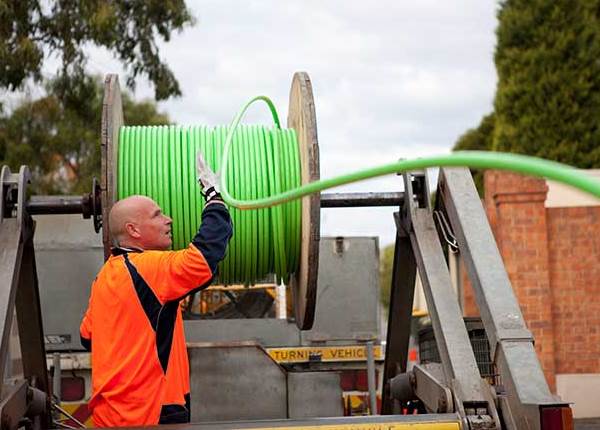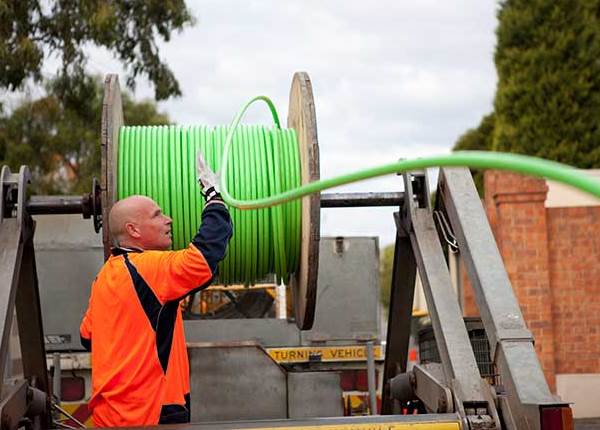
The Coalition has officially junked Labor’s previous Fibre-to-the-Premises mandate for the National Broadband Network (NBN) after Minister for Communications Malcolm Turnbull formally instructed government provider NBN Co to use whatever technology it believes can deliver sufficient services and speed to key areas as long as the price is right.
The well-anticipated move draws formal a line under the vision of an Australia-wide uniform broadband network primarily based on hooking optical fibre directly to the vast majority households and businesses.
Instead, the new model will fall back onto a blend of delivery options that the government claims will improve services faster and more cheaply – even if maximum speeds could ultimately be slower than those offered by direct fibre connections.
The official instruction from Mr Turnbull came in the form of a letter to NBN Co executive chairman Dr Ziggy Switkowski saying that the government had now updated its Statement of Expectations to reflect a new “cost effective” way of rolling out the NBN.
The new delivery model, variously dubbed as a Multi-Technology-Mix (MTM) and FTT-x, will be rolled out on an “area-by-area” basis.
The landmark update replaces all preceding Statements of Expectations from the previous Labor government and officially aims to deliver the NBN at “less cost for taxpayers and more affordability for consumers”.
Mr Turnbull has told NBN Co that the updated Statement of Expectations will also require the company to continue the NBN rollout using an ‘optimised multi-technology model’ proposed in its Strategic Review.
The cheaper way of delivering the NBN is consistent with the Coalition’s election promise to broadly fulfill Labor’s aims to overhaul broadband at a lower cost using relatively less expensive techniques.
A central element will be the scrapping of the previous Labor government’s plan to replace the entire existing copper-based network with high speed fibre-optic cable sent directly into homes and businesses.
The mix of technologies being promoted by Mr Turnbull consists of FTTP, hybrid fibre coaxial (FHC) – better known as pay-TV cable , fixed wireless, satellite and fibre-to-the-node/basement/distribution point (FTTN/FTTB/FTTdp).
FTTN has been the Coalition’s favoured mode of delivery for the NBN because of the projected savings to be made by not having to replace copper wire that leads directly into premises.
However a key question that remains in the air is the lifespan of existing copper assets. Mr Turnbull has previously been coy about how long the copper wire will last, saying at the Coalition’s election policy launch on broadband that “nobody knows”.
A fundamental question is how much ongoing maintenance will be required in the foreseeable future, its cost and at what stage replacement with copper becomes viable.
When the Coalition was in Opposition from 2007 to 2013, it criticised the Rudd and Gillard governments not only over “cost blowouts” related to the NBN but also questioned whether the scale of the huge telecommunications upgrade was actually unnecessary.
The Labor government projected the initial projected spend of the NBN to be $43 billion, but in the lead up to the 2013 federal election, the Coalition promised to halve that cost to $23.1 billion.
In the latest announcement from the federal government, Mr Turnbull said that this new multi-technology model will save NBN Co $32 billion in delivering “badly needed broadband upgrades” across the country.
Mr Turnbull said that the government’s investment will be capped at $29.5 billion, with the balance of the $41 billion project to be funded by the private sector.
Comment below to have your say on this story.
If you have a news story or tip-off, get in touch at editorial@governmentnews.com.au.
Sign up to the Government News newsletter


Right, the private market had fifteen years, FIFTEEN YEARS, to stay placing the stuff in the ground.
When will the LNP admit that it openly, wilfully, dare I say criminally lied to the Australian public? That their experts are nothing more than hacks, reading from Wikipedia at best. At worst, corrupt.
I will wager that it is my later years and maybe even my children, who will be paying for this. That the history books will look on this time as a layer of slime and lost opportunities.